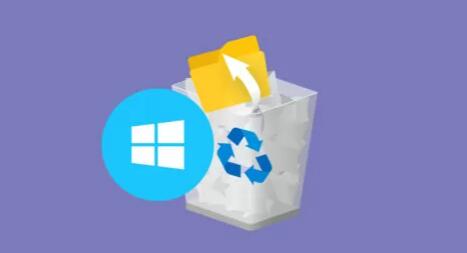Losing a file can be frustrating, especially when it contains important information. Fortunately, there are several methods to recover deleted files in Windows 8.
File Deletion in Windows 8
When you delete a file in Windows 8. it typically goes to the Recycle Bin. However, if you empty the Recycle Bin or delete the file using Shift + Delete, it bypasses the Recycle Bin and can be more challenging to recover. The actual data remains on the hard drive until it is overwritten by new data, which means recovery is possible if you act quickly.

Method 1: Check the Recycle Bin
The first step in recovering a deleted file is to check the Recycle Bin.
Open the Recycle Bin:
Double-click the Recycle Bin icon on your desktop.
Search for Your File:
Browse through the list of deleted files. You can also use the search bar to type the name of the file you’re looking for.
Restore the File:
If you find the file, right-click on it and select “Restore.” The file will return to its original location.
Note:
If the file isn’t in the Recycle Bin, you’ll need to try other recovery methods.
Method 2: Use File History
Windows 8 includes a feature called File History, which regularly backs up your files. If you had File History enabled before deleting the file, you might be able to restore it.
Open File History:
Press the Windows key, type “File History,” and select “Restore your files with File History.”
Browse for Your File:
Use the arrow keys to navigate through the backed-up versions of your folders. Look for the folder where the deleted file was located.
Restore the File:
Once you find the file, select it and click the green “Restore” button. The file will be restored to its original location.
Note:
If you didn’t have File History enabled, you’ll need to explore other options.
Method 3: Previous Versions
Windows 8 allows you to restore previous versions of files or folders using System Restore.
Navigate to the Folder:
Go to the folder where the deleted file was originally located.
Right-Click on the Folder:
Select “Properties” from the context menu.
Go to the Previous Versions Tab:
Click on the “Previous Versions” tab to see a list of available backups.
Restore a Version:
Choose a version of the folder that contains the file and click “Restore.” This will restore the entire folder to that point in time.
Note:
This method restores all files in the folder, so make sure to back up any current files you want to keep.
Method 4: Third-Party Data Recovery Software
If the above methods don’t work, you may need to use third-party data recovery software. These programs can scan your hard drive for recoverable files.
Recommended Data Recovery Tools:
Recuva:
A user-friendly tool that can recover files from hard drives, memory cards, and USB drives.
How to Use:
Download and install Recuva.
Launch the program and follow the wizard to select the type of file you want to recover.
Choose the location where the file was deleted and start the scan.
After the scan, select the files you wish to recover and click “Recover.”
EaseUS Data Recovery Wizard:
A powerful tool with a simple interface, supporting recovery from various devices.
How to Use:
Download and install the software.
Open it and select the drive where the file was deleted.
Click “Scan” to find lost files.
Preview the files and select the ones you want to recover, then click “Recover.”
MiniTool Power Data Recovery:
An effective recovery tool that can retrieve lost data from damaged drives.
How to Use:
Install MiniTool Power Data Recovery.
Choose the type of recovery you need (Undelete Recovery, Damaged Partition Recovery, etc.).
Follow the prompts to scan for deleted files and recover them.
Important:
When using recovery software, avoid installing it on the drive where the file was deleted to prevent overwriting any data.
Method 5: Check Backup Solutions
If you use cloud storage services (like OneDrive, Google Drive, etc.), check if the deleted file is available there.
Log into Your Cloud Account:
Go to the cloud service where you save files.
Check the Trash or Deleted Items:
Many cloud services have a trash or deleted items folder where you can recover lost files.
Restore the File:
Follow the service’s instructions to restore the file.
Tips to Prevent Future Data Loss
Regular Backups:
Use File History, cloud services, or external drives to regularly back up important files.
Enable Recycle Bin Protection:
Configure the Recycle Bin settings to prevent accidental deletions.
Use Data Recovery Tools:
Familiarize yourself with recovery tools and procedures for future use.
Be Cautious:
Always double-check before deleting files, especially important documents.
Start by checking the Recycle Bin, then utilize File History or previous versions if available. If those methods fail, third-party data recovery software can help you retrieve lost files. Always remember to back up your data regularly to minimize the impact of accidental deletions in the future.
About us and this blog
Panda Assistant is built on the latest data recovery algorithms, ensuring that no file is too damaged, too lost, or too corrupted to be recovered.
Request a free quote
We believe that data recovery shouldn’t be a daunting task. That’s why we’ve designed Panda Assistant to be as easy to use as it is powerful. With a few clicks, you can initiate a scan, preview recoverable files, and restore your data all within a matter of minutes.
Subscribe to our newsletter!
More from our blog
See all postsRecent Posts
- Data recovery salt lake city utah 2025-04-18
- Data recovery sacramento 2025-04-18
- Data recovery miami 2025-04-18

 Try lt Free
Try lt Free Recovery success rate of up to
Recovery success rate of up to









